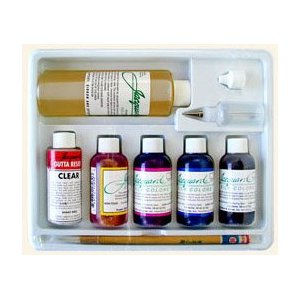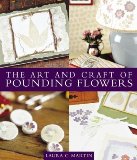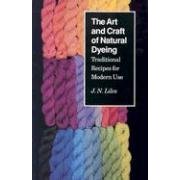Main | 2012 August »
Sunday, September 23, 2012
I would like to dye my blue jeans dark again. Can you tell me the brand of dye that is best for this?
Name: Sheila
Country or region: USA
Message: I would like to dye my blue jeans dark again. Can you tell me the brand of dye that is best for this? Thanks.
You won't ever be able to dye your jeans to a true denim look again. The look of denim is produced by weaving together threads of different colors: indigo-dyed warp (lengthwise) yarns, with white weft (filling) yarns. However, you can dye the jeans to be a dark color that is mostly the same color overall. The effect will be more like a solid-color twill. (Denim would be called twill if only a single color of yarn were used to weave it.)
What I advise is to avoid all-purpose dyes, such as Rit dye, because their color fades quickly and ruins anything you wash in the same laundry load with it. There are much higher-quality dyes available. If you use a fiber reactive dye, then, after you've washed out all of the excess unattached dye, the color will last and last. Fiber reactive dyes on cotton can easily keep their color twenty times as long as all-purpose dyes, because they don't run in the laundry. After the initial washing-out, you can launder dark clothing dyed with fiber reactive dye in the same load as white clothing without any color transfer, even in hot water.
There are two different dyes that I recommend for you to consider, both fiber reactive dyes. The easiest-to-find may be the Dylon Permanent Dye. My local Joann's fabric store carries this, and crafts stores often do, too. You'll need two envelopes of this dye to dye a one-pound pair of jeans, more if they are heavier. Read and follow the directions on the side closely. You will need a small plastic bucket to immerse the jeans in the dye in; Dylon Permanent Dye is not packaged in quantities suitable for a washing machine. This dye requires hot tap water to work, but it is a good fiber reactive dye that stays bright (or dark) for a long time. You'll have to wash the jeans you dye separately in hot water a couple times to get all the excess dye out, but then after that the dye that remains will not run at all. Dylon Permanent Dye comes with the dye fixative already included in the mixture; you may need to add some salt, but that's all.
The other dye I recommend is Procion MX dye. It's very similar to the Dylon Permanent dye in how easy it is to apply and how long it lasts, but it is harder to find in local stores, and it is available in at least ten times as many different pre-mixed colors. If you can't find this dye locally, you can order it online; see my page of "Sources for Dyeing Supplies Around the World". The dye fixative is not included in the dye mixture, which makes it more versatile and less expensive; this means you have to buy the soda ash or washing soda separately. Since you can measure out however much dye and washing soda you need, you can use Procion MX dye to do your dyeing in a washing machine, if you like. This saves a lot of stirring and produces a more perfectly solid color. You will need to find a good recipe and, as with the Dylon dye, follow the recipe closely. See my page, "How can I dye clothing or fabric in the washing machine?". You can also use Procion MX dye in many other ways, for tie-dyeing, shibori, dye painting, low water immersion dyeing, and others. Unlike Dylon Permanent Dye, it can be used at room temperature, which makes it a tremendously versatile choice of dye.
All of this advice assumes that your jeans are mostly cotton. It's okay if they contain a little spandex, as long as they are mostly cotton. If they are a poly-cotton blend, it's a different question, with a different answer.
(Please help support this web site. Thank you.)
Friday, September 21, 2012
Can I use cold water with iDye (direct dye)?
Name: Maya
Country or region: Mexico
Message: I bought iDye in the USA as it said dissolves in water. Now that I am in Mexico and opened the package, it says HOT water. I don't have hot water and I don't have a pot that is not used for cooking...I can make small batches of water in my electric tea pot. Can I use cold water?
It looks like you bought the wrong kind of dye for your circumstances.
Most dyes require heat. Without heat, they simply will not bind to the fiber in your fabric. There is no point in even trying a hot-water dye, if all you have is cool or room-temperature water. Jacquard iDye contains direct dye, which is a type of hot-water dye for plant fibers such as cotton or rayon. (See "About Direct Dye".) Direct dye works best when simmered with the fabric for half an hour or longer at a temperature of at least 86°C (or 187°F). However, it can be used, if a little less effectively, with water that's hot enough to scald, at 60°C (or 140°F); perhaps you could buy a cheap polystyrene foam cooler and fill it with water heated, one potful at a time, in your electric teapot, if whatever you're dyeing will fit into the cooler. The insulation of the cooler would help to retain the heat long enough for the dye to work. You'll want the cooler to be a cheap one, since you should not plan to reuse dyeing equipment for food, but sturdy enough not to spring a leak when filled with water. You will also need a long-handled spoon to stir the fabric in the dyebath.
Note that iDye is a different type of dye than iDye Poly, which is usually sold in the same display. iDye Poly is a type of dye called disperse dye. iDye is intended for use on cotton or rayon in very hot water, while iDye Poly is intended for use on polyester in actually boiling water. Don't try to dye polyester without a means to boil your dyebath throughout the dyeing process.
When you next have an opportunity, you should buy some cold water dye. The dye you should buy, if you are going to be dyeing at room temperature, is Procion MX fiber reactive dye. In spite of its being described as a "cold water dye", Procion MX dye should be used at a warm room temperature 21°C (or 70°F) or above. All other types of dye, even other types of fiber reactive dye, require warmer temperatures than this. Many crafts stores in the US carry this dye only in three-color tie-dyeing kits. If this is the only form you can find, buy it, because the same dyes and fixative used for tie-dyeing are equally suitable for many other types of dyeing, as long as you are dyeing either a plant fiber, such as cotton, linen, rayon, or hemp, or else silk, which, though it is a protein fiber, is sturdy enough to withstand the high pH of the fixative used in these kits.
In the US, you can mail-order a marvelous range of colors in the Procion MX line, as many as a hundred different pre-mixed colors from some suppliers. I don't happen to know of a local source for Procion dyes in Mexico, nor of a dye supplier that will ship to Mexico, even among companies that ship internationally to other countries. Unfortunately, Dharma Trading Company does not at this time ship to Mexico, and Jacquard Products' store finder returns no results for Mexico. Blick Art Materials, which carries many Jacquard Products items, including Jacquard brand Procion MX dye, does supply mail-order catalogs to Mexico, so perhaps they will ship dyes to Mexico. Also see my list of "Sources for Dyeing Supplies Around the World", for suppliers in the US and in other countries (but unfortunately not Mexico); other suppliers listed there in various countries might be able to ship to Mexico.
As an alternative to dye, fabric paints can be applied at room temperature; most require pressing with a hot iron to heat-set the paint, after it is dry. Fabric paint does not look or act quite like dye, but it can be useful in circumstances that dye is not suitable for. It should be specifically labeled for use on fabric, as paints other than fabric paints produce a hard, stiff, scratchy feeling on fabric; fabric paints are much softer and nicer.
(Please help support this web site. Thank you.)
Thursday, September 20, 2012
How was this tie-dyed t-shirt made?
Name: Eric
Country or region: Missouri
Message: Hey, I was just curious about how the shirt below was made... I can't find the name of the technique or directions on how to make one. Any help with just a finger in the right direction would be great.
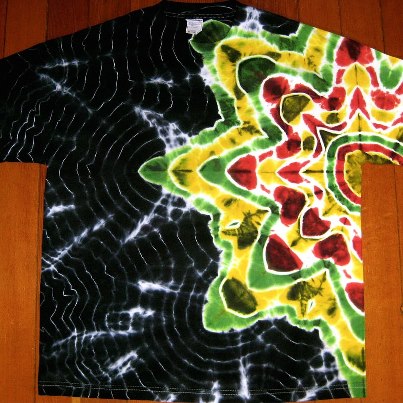
This is a mandala or star design, centered right under the arm on one side.
The shirt was folded in half, then into sixteens, in such a way that all of the edges are exposed, rather then having the shirt wrapped around itself again and again, which would prevent the color from being equally intense on all sides. The narrow triangular shape that results then has the string tied around it at different angles to create the triangular points in the design.
The string, probably artificial sinew, has been pulled very tight to prevent the dye from reaching the shirt, leaving the white lines that you can see. The inner half of the tied shirt was dyed with alternating yellow, red, and green, with a little black which may have been applied intentionally or may have been a by-product of the dye applied for the background. The background, which was the half of the tied shirt away from the center of the tie, was dyed intensely black.
The dye used was certainly a fiber reactive dye (not an all-purpose dye such as Rit!), probably Procion MX dye, used with soda ash as the fixative, on a 100% cotton shirt.
Richard W. Rogers, owner of Dyed in Vermont, has other side-star t-shirts for sale. For example, look at this one:

He has also written and published a clearly-illustrated book with full details on how to dye stars and mandalas. See "How to Tie-dye Stars: Book 2 of the Tie-Dye Art Series" [Amazon link]. (Don't bother looking for "Book 1", because this is the first book in the series to be written.)
There are also excellent videos available on how to tie-dye stars, mandalas, and lotuses. Look for the DVD, "Advanced Tie Dye Techniques: Making Shapes and Mandalas", by Tom Rolofson and Martine Purdy, and Phat Dyes's DVD "Tie Dye Crash Course - Stars". [Also Amazon links.] Another excellent source for tie-dyeing tutorials is the Facebook group "Addicted to TIE DYING".
(Please help support this web site. Thank you.)
Tuesday, September 18, 2012
Dyeing stretch velvet of unknown fiber content
Name: Dianne
—ADVERTISEMENTS—

Dye polyester and poly/cotton blends


Country or region: USA
Message: I have looked for this question but don't see it exactly although I learned much from your info on fiber reactive dyes. I am a rug hooker and am continuing to experiment with hooking and braiding velvets. Dyeing success has much to do with the fiber content, silk being the best with acid dyes. But stretch velvet is the best to hook with and the fiber content is not always known. So I have purchased Procion dyes from Dharma but so far am unhappy with the concentration of color. I want to spot dye or dip dye as we do with wool and the water bath using cold method, dilutes out the color too much.
Here is my question: a very successful method using wool and acid dyes is placing a piece of wool in the bottom of an electric frypan, just the size of the pan. The wool has been soaked in synthrapol. Several dyes with citric acid are dripped or splotched onto the wool and further layers can be placed with more dye. The temp is maintained just to slight bubbling for an hour, covered. So very little liquid, just the wetness and dye. The results are wonderful.
I want to try the same method with my stretch velvet which has poly or low %silk with salt, soda ash and Procion dyes. My concern is whether it will be safe to heat this dye and what you think. Thanks in advance Paula. You have been so helpful in the past!
Your electric frypan method for wool is almost identical to the method called low water immersion dyeing for cotton, except that soda ash is substituted for the citric acid, of course. Since cotton and silk can be dyed at room temperature with Procion MX dyes and soda ash, a plastic bucket can be substituted for the frypan. (See "How to Do Low Water Immersion Dyeing".)
It is okay to add extra heat when dyeing cotton, rayon, or silk with Procion MX dyes, as long as the dye and the soda ash are both in the fabric as soon as you add the heat, or before. Procion dyes will react quickly with whatever they are in contact with as soon as they heat up. If they are in contact with a fiber they can react with, then it's fine; if they are in contact only with water, then they will be used up and fail to react when they are later added to the fiber.
I think it is absolutely essential to test every fabric of unknown fiber content before using it in any dyeing project.You should test the stretch velvet before adding it to your stash of usable materials. The only time you can safely skip this step is when you won't mind if the fabric stays white. You could do this step with a burn test or by doing a very quick little dye test. If it is mostly cotton, silk, or rayon, velvet will dye beautifully with Procion MX fiber reactive dyes.
For a fast dye test, place a snippet of the fabric, large enough that it won't wash down the drain too easily, into a zip-top freezer bag with a small amount of Procion MX dye dissolved in water, plus a small amount of soda ash, mix until the fabric is soaked with the dye, then microwave until it is hot, watching carefully to make sure that the bag does not inflate so much as to explode. Rinse the excess dye with first cool water and then very hot or boiling water. (Use a strainer or a mesh lingerie bag to keep the small swatches from going down the drain.) Using the microwave speeds the dye reaction so you don't have to wait for your results.
For the opposite approach, to find out quickly whether a fabric will take polyester dye, buy some Iron-on Fabric Crayons, either Crayola or Dritz brand, from the local fabric store, or order them from Dharma. These look a lot like ordinary wax crayons, but they cannot be used interchangeably with them, as the material they are made of is completely different. Color onto some paper with the disperse dye crayons, then, protecting your ironing board with layers of newspapers or paper bags, iron the dye-coated surface of the paper against the fabric, using the high heat setting on the iron. After washing, the dye will remain on only synthetic fibers such as polyester, acetate, acrylic, and nylon. (See "Iron-on Fabric Crayons for Synthetic Fibers".)
The iron-on transfer method of applying disperse dyes is very easy to do, in as many colors as you like. If you decide you like the method when you try it with the crayons, but want a wider range of colors and less trouble in coloring the iron-on, you can order transfer dyes. You use transfer dyes by mixing them with water and painting them onto paper, then ironing on, as with the transfer crayons. Dharma doesn't carry transfer dyes (except for the crayons), but you can order them from PRO Chemical & Dye in Massachusetts or Aljo Mfg in New York. Jacquard's iDye Poly can theoretically be used as transfer dye, but it's slower to transfer than the dyes that are specifically sold for use in transferring, and is not available in the same wide range of colors. [UPDATE: Dharma is in fact selling disperse dye inks now, in the newly introduced Decoart Ink Effects, available in twelve colors.]
You must test to see how much damage the heat inflicts on the spandex in any stretch blends. Spandex is a heat-sensitive fiber which is supposed to be washed only in cool water. Excessive heat may result in the loss of shape in spandex-blend fabrics, but this is obviously less of a problem if you'll be assembling it into its final form only after dyeing is completed. Before using it, check to be sure that a spandex-blend fabric does not seem to have been damaged or weakened by the heat involved in applying dye.
(Please help support this web site. Thank you.)
Friday, September 14, 2012
Name: Gina
Country or region: USA
Message: I have a lot of fabric to dye for my Halloween party this year to create a circus tent look (4.5' wide strips of red, blue and yellow). The fabric I have was given to me for free and is 95% polyester, 5% spandex. I used the scarlet Rit dye to test to see how it would react and it's just a pink color once I rinsed it. Since this is only going to be a one-time use for the fabric and I do not plan on washing it, I am questioning what would happen if I used the Rit dye but left it in the tubs for a day or more and just wring the fabric out, not rinse it and then air dry it. I am looking for the cheapest and easiest way to get some good color, but am not sure this will work. Can you offer up any info or ideas? (By the way, I have 1 roll of fabric that is 40"x100' and another roll that is 54"x100'... i have a ton and not a lot of cash to do this!)
Is there any chance you can get someone to give you some fabric made of cotton or rayon? It would be so much easier and cheaper to dye!
Polyester is a huge pain to dye. It really requires boiling-hot temperatures, which means you'd need a huge pot to boil it in, and special polyester dye. Temperatures that are hot enough to dye polyester will tend to destroy spandex, so your polyester/spandex blend is not really dyeable at all.
Dyeing polyester with Rit all-purpose dye will not work. If you avoid rinsing at all, in an attempt to maintain some color, then the unrinsed dry dye will rub off onto whatever touches it, ruining clothing or furniture and exposing everyone to breathing potentially allergenic or slightly toxic dye powder. This would be not only a horrible mess, but a health hazard, as well. It's extremely important always to rinse out excess unattached dye, no matter what kind of dye you are using.
Instead of dyeing your polyester, it would be better if you were to paint it. The best paint for fabric is fabric paint, of course. Although fabric paint would be a much better idea than using Rit dye on polyester, it can be quite expensive, especially for a project as huge as yours. Buying in bulk helps cut costs considerably, but even so a gallon of Dye-Na-Flo costs over $60.
The cheapest paint would be artists' acrylic paint or even house paint; paints other than fabric paint will be stiff, hard, and scratchy after they dry, but that might not matter too much for this particular project. Don't use poster paint, since it will dissolve and smear if any moisture gets onto it.
Dilute acrylic paint with water, and, if you can afford it, some fabric medium. Fabric medium is hard to find except online, sold among other mediums in art supply stores for acrylic painters, but it can be used to turn artists' acrylic paints into a good home-made fabric paint, making it softer and nicer, and also making it cling much better to the fabric.
I think you'd be better off trying to find some cheap fabric that is already the colors you want, or perhaps some cheap 100% cotton fabric to dye.
If you get some cheap cotton fabric, which is easy to dye, you will save a lot of money by avoiding the expensive little boxes of Rit dye that only dye a couple of yards of fabric each, instead ordering an inexpensive direct dye, such as Dharma Industrial Dyes from Dharma Trading Company. One $7 package of Dharma Industrial Dye will color as much fabric as one to two hundred $3 boxes of Rit dye can! Of course, like Rit dye, this dye will work only on natural fibers, not on the polyester you have.
(Please help support this web site. Thank you.)
Thursday, September 13, 2012
Is there a resource with the spectra of these dyes?
I was wondering if there is a resource with spectra of these dyes? I have a UV-vis spectrum of the A22 Sahara Sun and 2 Permabril dyes (yellow C2R and orange C3R, which I ordered before I found your website), but was wondering if there is somewhere where there are the spectra of other dyes e.g. the Procion Yellow MX-8G (the Permabril dyes I have have a bit of a shoulder on the peak, unlike the A22 Sahara Sun peak which is much cleaner). In case you are wondering, I am a scientist too. Have previously been working with photographic dyes though!
Yes, I can give you the visible absorption spectra of many of these dyes, and the UV-visible absorption spectra are available for many more. Years ago I borrowed a colleague's spectrophotometer to do some quick absorption spectrum scans for vials of dissolved dichlorotriazine dye, and Olli Niemitalo, who wrote the Dye Mixer Applet, has the UV-visible absorption spectra for many dyes in this class.
You should look at the Dye Mixer Applet to see what Olli did with his absorption spectra: (this is its permanent address). It's a wonderful resource for dyers. There is more explanation of it in the Dye Forum in a post entitled "How to use the Dye Mixer Applet".
Permabril C dyes are the same dichlorotriazine fiber reactive dyes that every other dye manufacturer calls "M" or "MX", often headed with the description "cold fix dyes"; I suppose that the "C" after "Permabril" may stand for "cold". Permabril yellow C2R and Permabril orange C3R—oh, these names must be mixed up—Permabril Yellow C-3R is almost certainly Colour Index reactive orange 86 (not to be confused with reactive yellow 86, which is yellow MX-8G!), while Permabril Orange C-2R is almost certainly Colour Index reactive orange 4. However, Permabril is Standard Dye's own brand name. My experience with Standard Dye is that they will commonly substitute a similarly-hued mixture of other dyes in the same class if they find it inconvenient to supply the dye that is ordered. If you order from them you must always be careful to specify the Colour Index name and make it clear if substitutes are not acceptable.
It's interesting that your absorption spectrum from the Permabril yellow dye has a shoulder, indicating a non-homogeneous mixture. None of the absorption spectra I've seen for Color Index Reactive orange 86 (yellow MX-3R) has a shoulder. For example, here's one I took, years ago, unfortunately starting only at 400 nm at the left edge since that's near the limit of the visible spectrum:
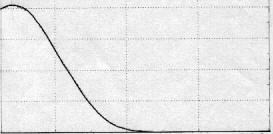

[Note to those unfamiliar with reading dye spectra: the left edge of the graph shows the absorption of violet light; since violet is the opposite, on the color wheel which represents our eyes' pigment system, of yellow, a lot of absorbance in the violet part of the rainbow produces a yellow color for you to see. The right edge shows absorption in the red part of the spectrum; since red is the opposite of green in our eyes' pigmentation system as described by a color wheel, a lot of absorption in just the red region would produce a green dye.]
Olli's wider absorption spectrum for this same dye shows no shoulder at all. Perhaps this is another example of Standard's substituting a mixture of dyes for the pure dye that the customer thought was ordered. The graphs I have show shoulders for C.I. blue 140 (turquoise MX-G), red MX-5B, red MX-8B (fuchsia) and orange MX-2R, but the others tend to be more symmetrical, not counting the known mixtures. Orange MX-2R has only a slight shoulder in the spectra I took:
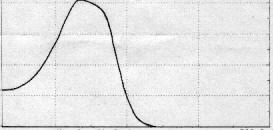

Yellow MX-8G has a much narrower peak than yellow MX-3R, but looks just about as symmetrical, no shoulder at all, in this and other absorption spectra:
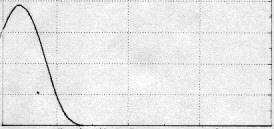

The case of blue 140 is interesting, as the amount of the shoulder peak, probably representing a dimer of the dye, changes with storage; see
Do look at my page, "Which Procion MX colors are pure, and which mixtures?". This page lists alternative names for various dichlorotriazine dyes, but doesn't include the Permabril brand names which are kind of screwy. Standard was playing fast and loose with dye names even before they introduced the Permabril name, often inventing totally bogus MX codes, a practice which is common for other dye classes but almost unseen among manufacturers of fiber reactive dyes. For example, they sell violet MX-2R, reactive violet 14, under the name violet MX-G, for no apparent reason; "G" stands for "Gelb", or yellow, although a violet simply cannot be yellowish. (See "What do the letters and numbers in the code name for a Procion MX type dye mean?".) Don't get me wrong, Standard Dye sells good dyes and they can be good to buy dyes from, as long as you are clear about what you will and will not accept, but they have different standards about naming than I and probably most other scientists do.
You can download the absorption spectra data from Olli Niemitalo's Dye Mixer. The jar package of the Dye Mixer is available for download; there's a link on the Dye Applet page. As a jar file, it can be opened with a program that opens zip files
(I had to rename it first to have .zip as a suffix). It contains a data file called data.txt, with all the spectra included as digital entries. Here is a graph of the absorption spectra in the Dye Mixer for Procion MX type dyes (the units for the y-axis are pretty much arbitrary):

Wednesday, September 12, 2012
I make quilts by pounding flower petals onto pretreated muslin. Is there any way to help make the dyes permanent?
Name: Judy
Country or region: USA
Message: I make quilts by pounding flower petals onto pretreated muslin ( alum and baking soda) Is there any way to help make the dyes permanent besides ironing them?
That's a terrifically bad idea for a quilt, unless you never wash your quilts and never sell them. It is suitable only for framing under glass. The colors from pounded flowers are not really dyes; they are only temporary pigments. Neither alum nor baking soda, nor any other household chemical, can be used to make them permanent enough to survive ordinary washing. Ironing won't do it, either, though it helps in preserving flower pigments on material that will never be washed.
There are two options for you to make your flower designs permanent enough to use on a quilt. One is to scan the images into a computer and then print them onto iron-on transfer paper for printing onto a different piece of fabric; the ironed-on designs will last considerably longer than your originals.
The other option is to color over the flower petal spots with fabric paint or fabric markers, covering the ephemeral flower pigments with permanent fabric paint. If you quilt around the outlines of the flower shapes and color them in using permanent fabric paint or marker, then it won't matter so much when the flower pigment fades away, as it inevitably will. You could use a clear colorless fabric paint, Neopaque Colorless Extender, on both the front and the back of your fabric, to seal the flower pigments in; this is better if you happened to chose relatively lightfast plant materials.
If you don't want to use either of these methods, let me urge you to use your designs in making fabric art that will be kept safe from dust and dirt in a picture frame behind glass, because they are not suitable for making quilts that will actually be used.
Tuesday, September 11, 2012
Dyeing silk and polyester with iDye Natural and iDye Poly, I got maroon instead of red. Is there anything I can get to bring the colour of the shell back to a vibrant normal red colour?
Name: Rhian
Country or region: Australia
Message: Hello, I dyed a dress that was 100% silk shell and 100% polyester lining. with iDye Natural and iDye Polyester. I was after a normal vibrant red colour for the shell and didnt mind to much about the underlay as the dress was already a medium pink. The dress has come out a maroon colour. I want to know if there is anything I can get to bring the colour of the shell back to a vibrant normal red colour?
The kindest solution for the dress would be to decide that maroon is not so bad. Removing the color is not guaranteed to work, and each additional color change step will include more stress to the silk fabric.
The unexpected color you obtained is not entirely surprising. Dye mixtures that produce a certain color on one fiber, such as cotton, often produce a different color on different fibers, such as silk. Although Jacquard's iDye for Natural Fabrics does work on silk, it is designed to produce the labeled color on cotton instead. Since cotton and silk are chemically quite different—silk is made of protein, while cotton is made of carbohydrate—many dyes that work on both fibers work a little differently on one than on the other. For more predictable color results on silk, it is better to use an acid dye, such as Jacquard Acid Dye, instead of a direct dye like iDye for Natural Fabrics. There are many types of acid dyes. Since you're in Australia, I recommend that you investigate the acid dyes sold online by Kraftkolour and by Batik Oetoro.
To undo the results of dyeing, the best method is to use a sulfur-based dye remover, such as Rit Color Remover (sodium hydrosulfite) or Jacquard Color Remover (thiourea dioxide). Batik Oetoro sells both of these chemicals online in Australia, under the names sodium hydrosulphite and TUD, respectively. They should be used in very hot tap water, or, for best results, heated with the dress in a non-aluminum cooking pot on the stovetop. I recommend using Rit Color Remover or other brands of sodium hydrosulfite in the washing machine, because, although it does not work as well in the hot tap water that your washing machine uses, it's so much less trouble to do it that way, and you can always repeat the process on the stovetop if the washing machine method doesn't work.
Don't ever use chlorine bleach on silk! Ordinary household bleach, which is based on the chemical sodium hypochlorite, quickly destroys silk, shredding it to unusability, and it produces an unpleasant permanent dull yellow stain on polyester.
You are likely to find that the polyester dye is removed as well as the silk dye. There's no way to avoid this problem, except by removing the lining first, which would be far too much trouble. Some dyes can be easily discharged with a sulfur-containing color remover, but others cannot. I can't tell you which of the different dyes in your dress will be discharged, and which will remain unchanged or even changed to a different color. This means that the results will be completely unpredictable until you try it. Color Remover might remove only the iDye Natural, and/or the iDye Poly, and/or the original medium pink polyester dye, and/or the original silk dye, or any combination of these four. Furthermore, and one of these dyes might, instead of be lightened or removed, instead change to a weird unexpected color, such as mustard yellow or beige. All I can say is that you will get similar color results with any of the sulfur-based color removers, regardless of brand or specific chemical.
After removing as much of the dye color as you can, if the dress is lightened enough, you can then start over on redying it to the color you like, using an acid dye for the silk and iDye Poly if you must color the polyester lining. Better to accept the color of the lining if possible, though, because polyester dye requires extended boiling, which is bad for the silk.
(Please help support this web site. Thank you.)
Monday, September 10, 2012
Name: Ann
Country or region: Denmark
Message: I have previously been using Dylon A22 Sahara Sun, but this is no longer being produced, so I need to figure out how to mix 'individual dyes' to make this mixture. On your website and on the MSDS only one dye (C.I. REACTIVE ORANGE 4 < 1% = Procion type Orange MX-2R) is listed. I was wondering if you have any further information on what could possibly be in the mixture from your experience? I am quite new to this!
Kindest Regards
Ann
 In the image to the left you can see that "Sahara Sun" was a yellow color, so yellow in hue that it can contain no more than a small amount of orange MX-2R. There are pure unmixed Procion MX type dyes that are similar in color to "Sahara Sun", but there would have been no need for Dylon to have added an orange dye to them to warm up their color, so I think that the yellow dye used in this case was probably the clear cool yellow known as Procion Yellow MX-8G. This is a common and easy-to-find dye, if you can access Procion dyes at all. It is possible that they also added a bit of a complementary color to dull down the color a little bit; you could try adding a little of a brown Procion dye mixture for a similar effect.
In the image to the left you can see that "Sahara Sun" was a yellow color, so yellow in hue that it can contain no more than a small amount of orange MX-2R. There are pure unmixed Procion MX type dyes that are similar in color to "Sahara Sun", but there would have been no need for Dylon to have added an orange dye to them to warm up their color, so I think that the yellow dye used in this case was probably the clear cool yellow known as Procion Yellow MX-8G. This is a common and easy-to-find dye, if you can access Procion dyes at all. It is possible that they also added a bit of a complementary color to dull down the color a little bit; you could try adding a little of a brown Procion dye mixture for a similar effect.
You can see a list of which of the Procion MX dyes are the single-hue unmixed mixing primaries on my page, "Which Procion MX colors are pure, and which mixtures?". The color chips on that page are only approximate, but you can see that there are several yellow Procion MX dyes, ranging from cool to almost orange. There are some dye retailers, particularly in the US, that sell as many as a hundred different shades of Procion MX dyes, but these are all mixed from the same dozen or so single-hue mixing primaries.
The Dylon Cold Water Dyes (unlike other lines of Dylon dye) are/were mostly Procion MX type fiber reactive dyes, which are fixed by the use of washing soda or soda ash. Dylon Cold dyes (again unlike other lines of Dylon dye) contain very little besides the dye itself, but they are premixed colors and therefore not as versatile for color mixing as dyes sold under the name Procion. Besides the greater versatility for color mixing, you will find that Procion MX dyes are exactly the same as the Dylon Cold dyes you've been using, since Dylon Cold dyes are based on Procion MX type dyes. One notable difference is that other sources for Procion MX dyes are usually more affordable, since each tin of Dylon Cold dyes contained only 5 grams of dye, enough to dye a pound of cotton fiber to a medium hue, at a somewhat inflated price. Smaller containers of dye always cost more per use than larger jars. Knowing that the Dylon Cold Dyes were Procion MX dyes allows you to access a wide range of recipes that are available for the use of Procion MX dye, from dye painting to low water immersion to solid-color high-water-ratio immersion dyeing.
The one dye supplier I know in Denmark, Granat Farvekompagniet, does not sell Procion MX dyes, as far as I know. They do sell another excellent line of fiber reactive dye, the Remazol dyes, which are similar to Procion dyes in how they work; however, they are less reactive, so they need a warmer reaction temperature than the dyes you've used in the past. (See my page "What is the effect of temperature on fiber reactive dyes?" for ideas on how to warm up your fabric or other fiber while it reacts with the dye.) Look at Granat Farvekompagniet's site to see the colors they show for their two different Remazol yellow dyes, Brill. Gelb GL (sunny yellow) and Brill. Gelb 4GL (lemon). Although the color chips on the web site for these two yellow dyes look very similar, Brill. Gelb GL is a warmer shade of yellow (that means slightly more orangish), so will be closer without mixing to the color that you have been using.
To continue with the same Procion dye type you have used in the past, you may have to mail-order from another country, unless you can find a source in Denmark for Procion MX dyes. Look at my page of "Sources for Dyeing Supplies Around the World"; scroll down to the "Europe" section. I have marked in that list which ones carry Procion MX dyes.
Sunday, September 09, 2012
Name: Diane
Country or region: Mexico
Message: Hi Paula - living in Mexico - your forum is a lifeline!! I am an experienced dyer but am having problems with Walnut ink crystals. Have no email address for the manufacturer. I want to "knock back" some very bright procion dyed pieces of fabric I have to use for patchwork - rather like the lovely tones of Indian dyed cloth. I soaked my fabric in walnut ink solution - got lovely knocked back colours but it just wasn't fixed! Do you please know what mordant to use? I gather from my research that alum doesn't work - rather limited here for chemicals but i do have alum. Have searched the web for hours - no luck. Very many thanks Diane in Mexico
If washfastness is your priority, I recommend that you learn how to make subtle tones with Procion dyes. We're certainly not limited to bright colors with Procion dyes, though I've many times seen natural dyes enthusiasts claim that we are. The secret is to mix opposite colors from the color wheel. Mix navy blue with orange, or red with green, to create neutral browns. There are thousands of different browns possible by using varying amounts of other colors, and all of them can be obtained by mixing Procion dyes. Try different proportions of each of the three primary colors, turquoise, magenta, and yellow, mixed together. Be sure to keep careful notes of how much you use, so you'll know what to do next time when you want a similar color. You can get achieve neutrals with smaller amounts of dye powder if you start with a dull navy color, such as Procion blue MX-2G or navy MX-3R, instead of the bright clear turquoise.
Alternatively, you can buy pre-mixed Procion dyes in various shades of browns and grays; try several to see which gives your favorite results. Dharma, ProChem, and the many retailers of Jacquard Products all carry several different suitable premixed brown and gray Procion dyes.
Once you have obtained the neutral brown colors you like, you can use them for overdyeing already-dyed pieces (try overdyeing several different clashing colors with the same neutral tone to make them harmonize), or you can mix them with your bright colors of dye to get subtler ones.
Do you know how your walnut ink was produced? I have recipes for dyeing with walnuts, but a prepared ink product could contain anything, maybe iron mordant or another additive, no telling what, and no telling how much you need to use. It will be very important to figure out how much of the walnut ink you should use for your amount of fabric. Note that the recipes for dyeing cotton fabric with walnuts are different from those for dyeing wool or silk. Mordanting is very different on cellulose fibers than on protein-based fibers. Walnuts are supposed to dye wool or silk pretty well even without mordanting, but cotton and other plant fibers require mordants.
For reference while dyeing with natural dyes, nothing can substitute for a thorough and reliable book of well-tested recipes. My favorite is J. N. Liles's essential book The Art and Craft of Natural Dyeing: Traditional Recipes for Modern Use , which contains vast amounts of information. (You can view portions of this book online via Google Books, at least in the US.) In it, he recommends premordanting cotton or linen fabric for walnut dyeing in three separate steps, first with alum, then with tannin, and next with alum again, before applying the walnut dye. He says that, unlike with other dyes, it is fine to use cheap alum or aluminum sulfate that is contaminated with iron; normally you don't want iron contamination in your alum because it will darken any color. , which contains vast amounts of information. (You can view portions of this book online via Google Books, at least in the US.) In it, he recommends premordanting cotton or linen fabric for walnut dyeing in three separate steps, first with alum, then with tannin, and next with alum again, before applying the walnut dye. He says that, unlike with other dyes, it is fine to use cheap alum or aluminum sulfate that is contaminated with iron; normally you don't want iron contamination in your alum because it will darken any color.
Liles's Basic Alum Recipe 2, on pages 20-21, looks like it should be a good choice for you: he says to dissolve one pound of aluminum sulfate in 2 quarts of hot water and allow to cool. Meanwhile, dissolve 1.5 ounces of washing soda in one pint of water, then add it slowly while stirring to the alum solution. Make a paste of half an ounce of chalk and add slowly while stirring, then add sufficient water to cover the material, about three to four gallons, and soak the fabric in it overnight.
After rinsing, proceed to the next step, mordanting with tannin, which Liles describes on page 19. Dissolve 1.5 ounces of tannic acid in five gallons of hot water in a nonreactive container and soak the fabric overnight, then repeat the alum mordanting as above. Rinse well after the last alum mordanting step, and proceed to the dyeing step. If you don't have access to tannic acid, you could substitute a much larger quantity of sumac, oak galls, or pomegranate rinds, all of which contain a considerable quantity of tannins.
Liles's recipe for dyeing cotton or linen with walnut is given on pages 177-8; unfortunately, unlike pages 19 and 20, this section is not included in the Google Books excerpt, at least as far as I can access, so you'll have to buy the book to see it. For one pound of cotton fabric, he calls for two gallons of green walnut rinds, or one and a half gallons of dry rinds, or four to five gallons of walnuts. I wonder how many jars of your walnut ink crystals will be required to equal this quantity! The method he gives involves soaking the walnuts overnight and then boiling them or simmering them for two hours. (That's been done already for your walnut ink crystals.) Once the walnut dyebath has been prepared, he says to start by adding the cotton or linen to the dyebath at room temperature, then heat it to between 170°F and 212°F and hold it at that temperature for two hours before removing, rinsing, and washing with detergent. Each of these many steps calls for mixing the fabric in carefully with the mordant bath or dyebath and working it around to make sure that all of the material is thoroughly soaked, while wearing good waterproof gloves.
Although walnut is a good dye, its washfastness will never equal that of a properly fixed synthetic fiber reactive dye, such as the Procion MX dyes. It would probably be best to use walnut to dye portions of a quilt that will be washed repeatedly only if you will be using it for the other fabrics in the quilt, as well. It's interesting to think of your patchwork's getting brighter and brighter with each washing, as the Procion dye outlasts the walnut, instead of getting more faded in color.
(Please help support this web site. Thank you.)
Friday, September 07, 2012
Using Drimarene K dyes for painting silk scarves
Name: Alice
Country or region: Australia
Message: Hello Paula - I have already done a few searches but to no avail - the artist who taught me is not contactable at the moment and all I would like to know is, after mixing the Drimarine K dyes with metho and vinegar I am enquiring if I use vinegar or water to dilute for softer shades and how much as in quantity do I need to dip my scarves in before either steaming or microwaving - I have totally forgotten! I found your website very informative, hence, I am making contact...Thank you in advance for any help you can provide - Alice
Hi Alice,
Drimarene K dyes are fiber reactive dyes, like Procion H dyes and the Remazol or vinyl sulfone dyes. This means that there are two completely opposite ways to use them to dye or paint silk. One way is to combine the dyes in some way with a high-pH chemical, and the other is to combine them with a low-pH chemical. The way the dye reacts with the silk fiber to bond to it is completely different in these two methods.
If you use a low pH, that is, an acid such as vinegar, then the fiber reactive dye acts as an acid dye; it doesn't form the particularly strong chemical bonds that fiber reactive dyes can form to silk or cotton under high-pH conditions. You lose the special benefits of fiber reactive dye this way, primarily their extraordinary washfastness, which makes their color persist for years even with frequent launderings. However, you gain the advantage that the color yielded on silk by fiber reactive dyes are more likely to match the color-mixing chips in the catalogs and dye color charts, which are designed to show what colors those dye mixtures produce on cotton. There is less different between the colors yielded by pre-mixed cotton dyes on silk when vinegar is used instead of cotton. This advantage is not so important if you are using the pure unmixed colors of dye, which are most of what Batik Oetoro sells; the pure unmixed colors produce very nearly the same hue, though perhaps lighter or darker, no matter what the fiber, but premixed colors can produce quite unexpected results on different fibers. Vinegar (see my page, "Using vinegar or acetic acid for dyeing") is the most popular acid for hand-dyers to use as a dyeing acid, followed by citric acid; ammonium sulfate is also used and has some advantages. See "Fiber reactive dyes on protein fibers" for more information about using acid with fiber reactive dyes so that they function as acid dyes.
If you use a high pH, instead, then the fiber reactive dye gets to fulfill its ability to form a very strong and long-lasting chemical bond to the silk fiber. For room-temperature dyeing, a stronger base is used, such as soda ash or trisodium phosphate, but for silk that will be steamed it is usual to use baking soda, instead. (Baking soda, or sodium bicarbonate, dissolves to form a much lower pH at room temperature than soda ash, or sodium carbonate.) A marvelous property of baking soda is that it actually turns into soda ash when it is steamed or baked, so that the dye-fiber bond is not formed until steaming occurs. This feature provides much more control over how the dye performs when painted.
Of course, baking soda or soda ash are never used in combination with vinegar; the high-pH chemical reacts with the low-pH acid, and, if the quantities are balanced, will form a neutral salt solution that cannot fix dye to silk at all. You must choose either the high-pH chemical or the low-pH chemical, not both.
It seems that the method you are using (which is one I have not heard of before) involves mixing the Driamrene K dye with vinegar and alcohol in order to make your stock solutions of different colors for dye painting. This is not one of the more popular approaches to silk dyeing; most silk dye-painters either mix the dye with water and baking soda or soda ash, or presoak a scarf in diluted vinegar before applying the dye to the wet scarf. However, it seems clear to me that when you want to use a color that has less dye powder in it, in order to get a paler hue, you should use a solvent/acidifier mixture that is the same as what you originally used to dissolve or dilute the dyes, for the greatest possible consistency in how the different color mixtures of dyes act. I suppose that your "metho" is most likely a local abbreviation for methanol, also known as methylated spirits. You could mix methanol and vinegar in the ratio produced by the recipe you've been using to dilute your dyes, along with any thickener or other additives your recipe calls for aside from dye, and then use this mixture to dilute your dye colors. Use as little as one part of the usual ready-to-use dye mixture in nine parts of the extra diluant to make the palest pastels.
You will probably want to study different recipes used with Drimarene K and similar steam-set fiber reactive dyes for dye painting silk. They represent alternatives to the method your artist-teacher taught you. Start with Batik Oetoro's collection of recipes for Drimarene K dyes, which are compiled into one page on their website; scroll down for the recipe for the hand painting process for silk. (It contains a small amount of acetic acid just to aid in dissolving the thickener, but then fixes the silk with a combination of baking soda ash soda ash, presumably in a quantity more than large enough to neutralize the acetic acid.) There is also a recipe for using Drimafix to set the Drimarene K dye on silk or cotton, after the dye painting is completed; Drimafix is a chemical known as sodium silicate, or water glass; see my page, "Sodium silicate as a fixative for dyeing", for more information on using it.
Ann Milner's book, The Ashford Book of Dyeing,  recommends using baking soda as the auxiliary when silk-painting with Drimarene K dyes, and includes a recipe for doing so. recommends using baking soda as the auxiliary when silk-painting with Drimarene K dyes, and includes a recipe for doing so. Since Drimarene K dyes are very similar to other fiber reactive dyes that are used for silk painting, you can also follow their recipes. Procion H dyes in particular are similar to Drimarene K dyes in both chemical structure and in reaction requirements, though actually Drimarene K dyes can also react at lower temperatures, well below steaming. There are many links to recipes for painting silk with Procion H dyes toward the bottom of my "About Procion H Dyes" page. Among those links, a good choice to look at is the Internet Archive copy of Jacquard Products' instructions for using Procion H dyes for painting, printing, or stamping. PRO Chemical & Dye's recipe for Direct Application using PRO H-reactive Dyes (powder or liquid) [PDF] is another excellent source.
Remazol dyes are another type of fiber reactive dye that can be used very similarly to Drimarene K dyes; their chemistry is not quite as close as that of Procion H dye, but their minimum temperature requirement for the high-pH method is closer. PRO Chemical & Dye, in the US, sells Remazol-type dyes as their "Liquid Reactive" dyes; see their instruction sheet for "Direct Application using Liquid Reactive Dyes". [PDF] Note that four different fixative recipes are given there, all of which are suitable for fixing the silk paintings after they dry. None of the recipes call for methanol, only water, urea, detergent, and water softener, in addition to the fixative you select. Another source for silk-painting recipes using Remazol dyes is Jacquard Products, which sells their Remazol-type dyes as Vinyl Sulphon; these recipes should also be equally usable for Drimarene K dyes, which are similar in their temperature and pH requirements. See their recipe for Concentrated Vinyl Sulphon dyes [PDF file], as well as their shade mixing chart [PDF].
You can see other sources for the method of microwave-steaming silk, in which you presoak the fabric in vinegar or vinegar-and-water before painting the dye on. With this technique, there is no need to add vinegar (or high-pH chemicals) to the dye paint. The vinegar in the fabric presoak is sufficient; it should not be allowed to dry, since the acetic acid in vinegar will eventually evaporate. Some recipes call for using straight distilled vinegar, the ordinary type that is 5% acetic acid; others call for diluting the vinegar with an equal quantity of water, or with twice as much water as vinegar. All of these will work, as long as the dye gets plenty of time to react with the silk at steaming-hot temperatures. Here is a link to Dharma Trading Company's simple recipe for "Tie-Dyeing Silk in a Microwave with Vinegar". Note the use of the plastic bag for steaming in the microwave: never allow silk or other fabric to be dried by the action of the microwave, which can happen if you don't seal the steam in with plastic. Microwaving dry fabric will result in fires, ruining the fabric, and doesn't work to set dye. Watch the bags as they cook in the microwave, ready to quickly turn off the microwave oven when the bags inflate with steam, so that they do not burst.
(Please help support this web site. Thank you.)
Thursday, September 06, 2012
What is in silk dye?
Name: Paula P.
Country or region: Canada
Message: Hi Paula. Great Website! Simple question, just curious for simple answer: What is in silk dye? Yes, yes all the amazing chemistry descriptions melted my brain. So I just want to know simply: pigment (Gods, ours, theirs) and water? alcohol? Alien pee? spit? flat beer? Could I make my own?(of course Why is extremely valid) It just seems so simple, but obviously not, but were those just the chemical composition of the pigments themselves? What were they using a couple of hundred years ago? I keep dancing around doing silk getting closer maybe soon. Like your stuff.
Nice to meet another Paula although pre Abdul it was much more rare.
Thanks
Paula
Far from being a simple question, this is one of the most complex questions you could ask about dyes! It can't be answered at all well without chemistry.
What is in silk dye? There are many different silk dyes, in different classes of dye, discovered or synthesized in different ways, but they do have some things in common. Silk can be dyed with indigo and other vat dyes, naphthol dyes (which for health reasons are not used by hand dyers in North America), direct dyes, mordant dyes (which include most natural dyes), fiber reactive dyes, or acid dyes. Acid dyes and fiber reactive dyes are the most popular choices for hand-dyeing silk.
The first important thing these dyes have in common is a large organic molecule ("organic" in its original sense of a carbon-containing chemical, but certainly not in the same sense as organically grown plants!) that has multiple double bonds which happen to absorb visible light. The color that you see is that of all the wavelengths of light which are NOT absorbed by the chemical structure of the dye. If no visible light is absorbed by a substance, its color will be only white, the color you get when all colors are reflected.
The second important thing these dyes have in common is that they are soluble in water, a factor conferred by the presence of sulfonyl groups added to the dye molecule. Sulfonyl groups are included in acid dyes, direct dyes, and fiber reactive dyes. Their presence means that a dye can act as an acid dye, forming the type of binds that acid dyes do; if you use Procion dyes, for example, to dye silk, they act as fiber reactive dyes when used with soda ash or baking soda, but they act as acid dyes when applied with vinegar, instead.
The third important factor is the ability to bond and attach to the silk fiber. It doesn't matter how brightly colored a substance is, if it fails to attach to the fiber, and just washes out. For example, beets do not make a good dye, no matter how you use them, because their red pigment refuses to cling to the fiber, so the red color washes away. Many good natural dyes are nearly useless by themselves, but (unlike beets) attach readily to silk that has been mordanted by simmering it with dissolved metal salts, such as alum. Pigments that are not dyes, because they cannot attach to the fiber themselves, can be used as fabric paints by gluing them onto the fiber, either with the acrylic base that's used in acrylic paints, or, more traditionally, by using freshly homemade soy milk as a binder. (Soy milk does not act as a chemical mordant for dyeing; instead, it acts as a physical glue, similar to the acrylic in fabric paints.)
Maybe you are not asking about what is in silk dye in general, but, instead, about what is in certain brands of commercially-prepared silk dyes that are used only for painting designs on silk. In that case, the answer is much more specific, and yet the details can be hard to come by, due to the manufacturers' secrecy. There is a group of silk dyes called the French silk dyes; different brand names include H. Dupont, Pebeo Soie, Sennelier Tinfix, and Kniazeff. They are very highly priced, compared to bulk silk dye powder that you mix for yourself, but they are convenient to use since they come premixed in a wide range of colors. Instead of just containing water, they also contain a variety of solvents, such as ethanol (the same as the alcohol people drink); methanol (wood alcohol, which causes blindness if people drink it); and other, less familiar solvents such as diethylglycol monobutylether, 2-(2-butoxyethoxy)ethanol, and 2,2'-oxybisethanol. Some of the solvents used can cause brain damage if used in high concentrations without any ventilation, so it is important to follow ordinary safety rules (the simplest being an open window). No matter what color you buy in any of these brands of French silk dye, you can only rarely find the names of any of the many dyes that are mixed together to make them. Some of the dyes are basic dyes, which are brilliant in color but highly susceptible to light-fading; some contain acid dyes; some even contain fiber reactive dyes, though they don't contain the pH necessary for these dyes to react with the fiber, so they actually function only as acid dyes. For more details, you can look at my Dye Forum post "What's in the French Silk Dyes?", which I wrote in February of 2008.
Can you make silk dyes yourself? I would recommend against trying to manufacture the colors yourself, but you can easily buy good dyes and mix them with water and other necessary chemicals yourself, mixing different colors to make new colors. This is an excellent way to save a considerable sum of money, as opposed to buying dozens of tiny jars of premixed dyes. Enough dye to mix up hundreds of tiny jars of dye might cost you only $20 in bulk, if you purchase it as dye powder. This is also an excellent way to avoid using dyes with inadequate safety information; while the makers of the French silk dyes refuse to share information about what dye chemicals they are using, except insofar as government regulations force them to place some limited information on MSDS pages, the makers of acid dyes and fiber reactive dyes will in many cases tell you exactly what they are selling you. (See, for example, the lack of cooperation one reader experienced when trying to find out whether a particular dye caused his wife's illness, in "Did Sennelier Tinfix Silk Dyes cause my wife's hyperthyroidism?".)
An economical way to prepare many beautiful colors of dye for silk-painting is to buy either Remazol fiber reactive dye, in liquid form, or to buy acid dye powder and mix your paints from them. Remazol dyes are sold in concentrated liquid form by PRO Chemical & Dye as "Liquid Reactive Dyes" and by Jacquard Products (and retailers such as Dharma Trading Company) as "Jacquard Vinyl Sulphon Dyes". Following the manufacturers' instructions, you dilute the dyes and mix them with some additives, paint your silk as you please, let it dry, and then use steam to set the design later. You can save your dye mixtures for a long time if you have jars for them. ProChem provides instructions for mixing their WashFast Acid Dyes for use in silk painting, while Jacquard Products does the same for the Jacquard Acid Dyes. In each case, you follow the manufacturer's recipe, let the silk dry, then use steam to set the dye. (This is like steaming vegetables, in a closed pot; you can't simply use a steamer or steam iron intended for removing wrinkles from clothing.)
What did they use as silk dyes 200 years ago? Amateurs did not do silk-painting at home as a hobby as they do today, because of the lack of good silk-painting dyes. Only solid-color dyeing was commonly done; interestingly-printed fabric had to be purchased. Although indigo and woad have been used for many centuries, it's unlikely that the average home dyer knew the proper procedure for getting an indigo vat to work. The toxic mordant potassium dichromate became popular after 1840; safer alum mordant was used long before that, and is still used by hand-dyers today. The chemical dye Prussian Blue was available two hundred years ago, as were various plant-based dyes, such as the yellow dyes fustic and quercitron (the latter derived from the inner lining of American black oak bark), the red dyes alkanet, madder, and brazilwood, and logwood, which is good for purple or black, depending on the mordant used. These plant-based dyes were and continue to be relatively expensive, compared to the synthetic dyes we use for most silk dyeing today. Gathering indigenous dye plants has always been possible, but producing long-lasting colors requires considerable amounts of knowledge, not necessarily widely possessed by home dyers two hundred years ago. Dyeing with plant-based dyes takes far more expertise than simply buying a packet of synthetic dye and following its directions.
(Please help support this web site. Thank you.)
Wednesday, September 05, 2012
Dyeing model airplane silk
Name: Allen
Country or region: California
Message: I'm a model airplane builder dope and silk guy when it isn't a racer or trainer. I want to tie dye some aircraft silk it an get wet but must not dry until on the plane. I've heard about aniline dyes what advice do you have?
I recommend that you use a good dye for silk, set the dye according to the dye type you choose, wash out the excess dye, let it dry for the sake of convenience, and then rewet the silk to put it on the plane. If you don't wash out the excess dye after you apply it, the dye will rub off on anything the fabric touches even after it's dry. Washing is an essential step in dyeing. You don't have to let the silk dry after you've finished washing out the excess dye, but if you do it makes it easier to time your different steps.
"Aniline dye" is an archaic term. It refers to the historic fact that aniline was formerly used as a chemical intermediate in making dyes. In most cases these days when someone says "aniline dye" they mean nothing more specific than "synthetic dye", i.e., a dye that doesn't involve using large quantities of plant matter. Most synthetic dyes are derived from petroleum these days, not aniline.
There are many good choices for silk dyes, almost all synthetic, but none derived from aniline. Acid dyes are the usual choice. For the ultimate in washfastness (resistance to fading in water), you can choose fiber reactive dyes such as Procion MX dyes (if set with soda ash, which does reduce the sheen of the silk a little), or the Lanaset range of wool and silk dyes, or premetalized acid dyes. For an opposite set of dye requirements, a dye that transfers readily from one part of the fabric to another when wet so that solid colors are very smooth, but whose washfastness is poor, you can use leveling acid dyes, such as Cushing Acid dye or even the acid dye included in all-purpose dye mixtures such as Rit. In between these two extremes would be the milling acid dyes, such as Jacquard Acid dyes and the WashFast Acid dyes; these are also good choices if your "silk" is really made of nylon. For detailed silk paintings, you can use Remazol fiber reactive dyes and then use steam to fix the dye, or, if lightfastness is not a concern, use one of the French silk dyes, such as H. Dupont, Pebeo Soie, Sennelier Tinfix, or Kniazeff. Your choice will depend on what feature of the dye is more important to your design.
For more information on how to choose a dye for silk, see my page, "How to Dye Silk".
A good tie-dyeing kit, such as the Jacquard Tie-Dye Kit or one of the kits supplied by Dharma Trading Company or PRO Chemical & Dye, will work very nicely on silk, following the recipe included in the kit for dyeing cotton. (It won't work on nylon or polyester.) The soda ash used to set the Procion dye makes silk a little less shiny, but it's still beautiful. You will want to practice a little in order to figure out how best to fold and tie your silk. Try test-dyeing a few inexpensive silk scarves (sold by Dharma Trading Company or by Jacquard's SilkConnection.com). (Please help support this web site. Thank you.)
Tuesday, September 04, 2012
How can we dye nylon 6,6 balls red without affecting their impact properties?
Name: Maurice
An ideal introduction to how to use synthetic dyes.
Country or region: Florida, USA
Message: We are trying to dye 3/4-inch diameter 6/6 nylon balls to a bright red color. The outcome must be such that impact properties of the nylon are not adversely affected. We have tried RIT dye, 100%, immersion for 4 days, only for the dye to rinse off, leaving the balls a tan color. What would you recommend? Thank you for your help on this matter.
It's possible that your nylon balls have some sort of surface finish that is preventing the dye from bonding to the nylon. The finish might have been applied for some other purpose in manufacturing and only inadvertently prevent dyeing, or it might be a water-repellent or stain-resistant finish of some sort. Some difficult surface finishes can be removed by a dip in strong acid, but many are impossible to remove. (Always prewash anything you want to dye, as thoroughly as possible, using detergent and very hot water, to remove those finishes that can be removed.)
Although the acid dye in Rit all-purpose dye is not of the highest quality, I would expect it to work on any dyeable nylon, to at least some extent, when applied to under the right circumstances, which means in the presence of both heat and a mild acid. Perhaps the Rit dye would not produce the very best red, but I would expect at least a light pink, indicating that the material is what it's supposed to be. In a very small-scale test, I myself have obtained a rather intense reddish color on nylon 6,6 by simmering it for half an hour at 85°C with fuchsia Rit dye (new formula), even without any added acid.
Did you use any acid in your dyebath, such as vinegar? The right pH is helpful in getting dyes to work well on nylon. The makers of Rit dye recommend adding one cup of vinegar for three gallons of water, when dyeing nylon, or about 2% by volume.
The right temperature is an even more important requirement for dyeing nylon. Did you heat your dyebath? I would not expect any dye to take well on nylon when applied at room temperature. Have you tested your nylon 6,6 balls to determine whether heating them in a dyebath interferes with their impact properties? The melting point of nylon 6,6 is supposed to be 509°F (265°C), which is safely far above the temperature required for a nylon dyebath. Different recipes for dyeing nylon with acid dyes call for temperatures anywhere from the 140°F (60°C) called for by Rit to almost boiling at 205°F (96°C). I usually aim for 185°F (85°C).
Try your all-purpose dye again, using some vinegar and heating the bath to at least 140°F; if the balls do not turn pink at all, then either they are made of a different fiber than nylon, or they are coated with an undyeable surface finish. If they do turn pink, then you may want to look into getting a better acid dye. Getting a true red often requires using much more dye than most other colors do, because bright red is a very intense dye color; you may want to double the amount of dye powder you use.
While there are many different kinds of acid dyes that should work on nylon, a particularly good choice would be one of the Nylomine dyes, sold by PRO Chemical & Dye under the name Washfast Acid dyes. They have many different color choices. Do not rely on the color chips that they publish for the dye; the color chips are intended for use only as an indication of likely color, but, like all dyes, must always be confirmed with a test dyeing. Since they do differ chemically, one of the colors might work better for you than another similar color. When applying the dye, it is important to follow the manufacturers' instructions as closely as possible. PRO Chemical & Dye's instructions [PDF] for using their dyes are available online for dyeing nylon using Washfast Acid dyes.
The Washfast Acid dyes should work well if your nylon is free of surface finishes and if you follow the recipe; however, no dye will work if the balls are coated with a surface finish that keeps the dye from penetrating into the surface fiber. If that's the case, it's likely that the only solution will be to try a different ball supplier.
(Please help support this web site. Thank you.)
|
|
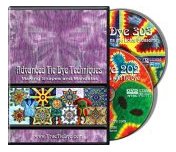
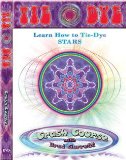



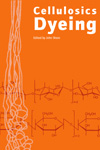









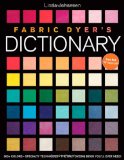

 In the image to the left you can see that "Sahara Sun" was a yellow color, so yellow in hue that it can contain no more than a small amount of orange MX-2R. There are pure unmixed Procion MX type dyes that are similar in color to "Sahara Sun", but there would have been no need for Dylon to have added an orange dye to them to warm up their color, so I think that the yellow dye used in this case was probably the clear cool yellow known as Procion Yellow MX-8G. This is a common and easy-to-find dye, if you can access Procion dyes at all. It is possible that they also added a bit of a complementary color to dull down the color a little bit; you could try adding a little of a brown Procion dye mixture for a similar effect.
In the image to the left you can see that "Sahara Sun" was a yellow color, so yellow in hue that it can contain no more than a small amount of orange MX-2R. There are pure unmixed Procion MX type dyes that are similar in color to "Sahara Sun", but there would have been no need for Dylon to have added an orange dye to them to warm up their color, so I think that the yellow dye used in this case was probably the clear cool yellow known as Procion Yellow MX-8G. This is a common and easy-to-find dye, if you can access Procion dyes at all. It is possible that they also added a bit of a complementary color to dull down the color a little bit; you could try adding a little of a brown Procion dye mixture for a similar effect.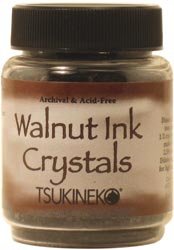
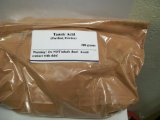




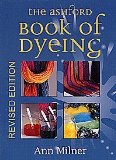

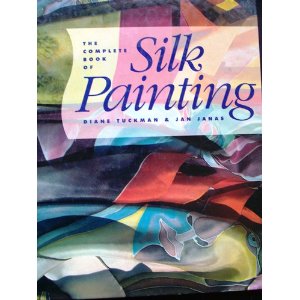
recommends using baking soda as the auxiliary when silk-painting with Drimarene K dyes, and includes a recipe for doing so.


